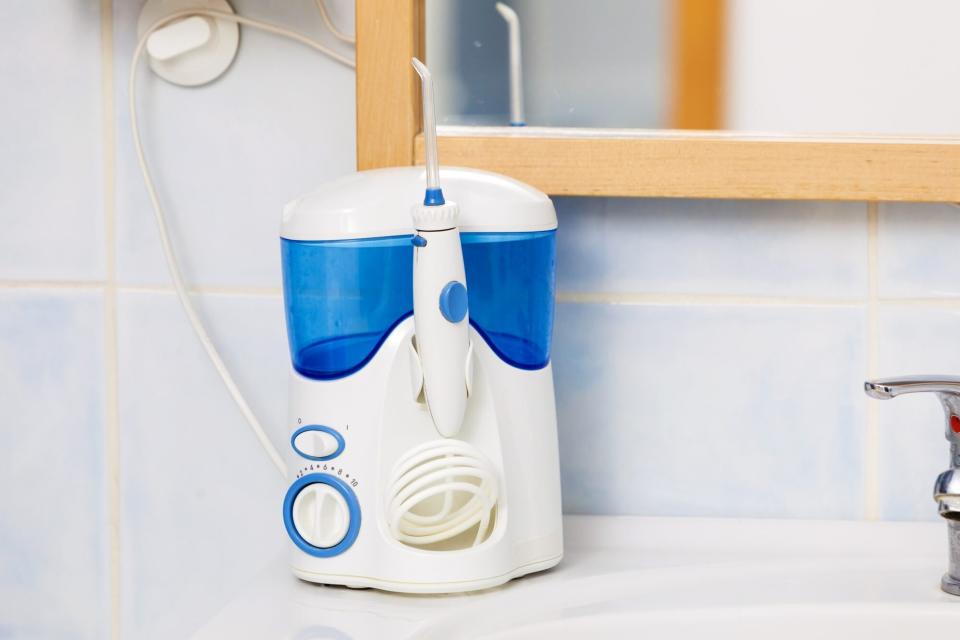A Waterpik or Flossing: Which Is Better for Your Dental Hygiene?
You'd be hard-pressed to meet someone who doesn't know what flossing is and why it's good for your oral hygiene, but what about water flossing? Water flossing is the action you take when you use a Waterpik ($99.61, amazon.com), an oral irrigator—a squirt gun of sorts—that pulses or sprays water at a high pressure to dislodge food and remove plaque from between teeth, explains Mark Burhenne, DDS, founder of Ask the Dentist. (Waterpik is a brand name, but it's become the generic term to use for these devices.) Though water flossers have been around for many years, these devices are gaining popularity, thanks to a new crop of great knockoffs available at a fraction of the price, says Dr. Burhenne.
With the surge in popularity, you may wonder: Is one technique superior to the other? Not really, according to Dr. Burhenne. "Studies suggest that water [flossing] is equivalent to flossing in terms of efficacy." There are some pros and cons that may affect your choice, though. Because a waterpik is essentially a powered squirt gun, it's another device you have to plug in and put on your countertop, he explains. It's not very portable, either. And although water flossers can cost quite a bit, they—like electric toothbrushes—do eventually wear out and require replacement.
Related: Is It Safe to Go to the Dentist During the COVID-19 Pandemic?

Voyagerix / Getty Images
But because flossing takes coordination (think of it like tying your shoes, says Dr. Burhenne), it's something some people can't physically do, namely the very young and the very old. For the less nimble, it's much easier to simply move an ergonomically-shaped pik around your mouth than it is to guide floss in between teeth. Water flossing may also benefit those with certain dental concerns, like implants or bridges (though rare these days) where the tissue may be more tender, says Dr. Burhenne. You can even add salt water, baking soda, and other mendicants to a waterpik to treat oral issues, he adds.
You might also argue that this type of product is better for the environment. Traditional floss not only comes in plastic packaging, but it's also made out of nylon—a non-biodegradable material that ends up in landfills. What's more, the stringy material has a tendency to wrap around animals, leading to injury and even death. Thankfully, there are 100 percent plastic-free and compostable alternatives like the one made by Bite ($12, bitetoothpastebits.com) among others.
The bottom line: "We should all be doing one or the other—or both, says Dr. Berhenne. No matter which one you select for your own personal oral hygiene, look for the American Dental Association (ADA) Seal of Acceptance, which indicates the product is proven effective. Keep this tip from Dr. Burhenne in mind, too: "You definitely want to waterpik or floss before you brush." Why? Buildup between the teeth—whether food or plaque—prevents the good ingredients in your toothpaste (like flouride or hydroxychloroquine) from reaching those areas, increasing the likelihood of tooth decay and cavities in those spots.

